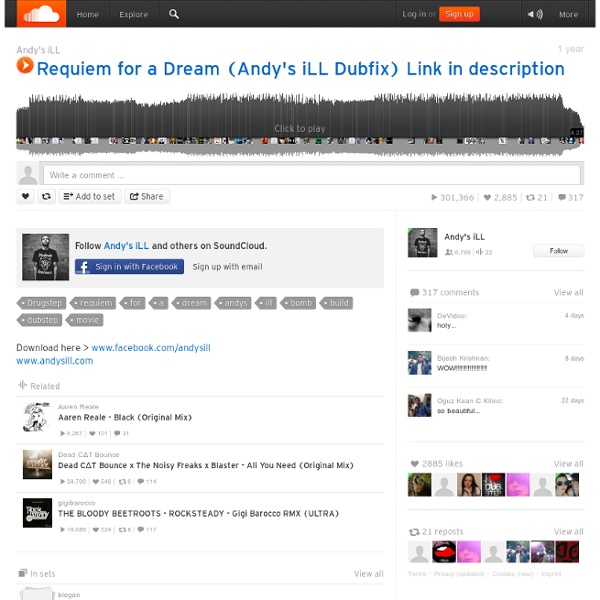Requiem for a Dream (Andy's iLL Dubfix) Link in description by Andy's iLL

Seeing in the Dark
Credit: cliff1066tm. Patient TN was, by his own account, completely blind. Two consecutive strokes had destroyed the visual cortex of his brain, and consequently, his ability to see. It is not uncommon for stroke patients to suffer brain damage, but the case of TN — referenced by his initials, the general practice in such studies — was peculiar. His first stroke had injured only one hemisphere of his visual cortex. Known as selective bilateral occipital damage, TN’s unusual injury made him the subject of much interest while recovering at a hospital in Geneva. To further test the extent of TN’s abilities, researchers from Tilburg University in the Netherlands devised a simple yet decisive experiment: an obstacle course. TN’s rare condition is known as blindsight. The researchers explained that TN’s success indicates that “humans can sustain sophisticated visuo-spacial skills in the absence of perceptual awareness.”
Fuck Music | We love music, we love to fuck
Binaural beats
Binaural beats To experience the binaural beats perception, it is best to listen to this file with headphones on moderate to weak volume – the sound should be easily heard, but not loud. Note that the sound appears to pulsate. The brain produces a phenomenon resulting in low-frequency pulsations in the amplitude and sound localization of a perceived sound when two tones at slightly different frequencies are presented separately, one to each of a subject's ears, using stereo headphones. Binaural beats reportedly influence the brain in more subtle ways through the entrainment of brainwaves[3][8][9] and provide other health benefits such as control over pain.[10][11] Acoustical background[edit] Interaural time differences (ITD) of binaural beats For sound localization, the human auditory system analyses interaural time differences between both ears inside small frequency ranges, called critical bands. History[edit] Unverified claims[edit] Physiology[edit] Overview[edit] Brain waves[edit]
Related:
Related:



